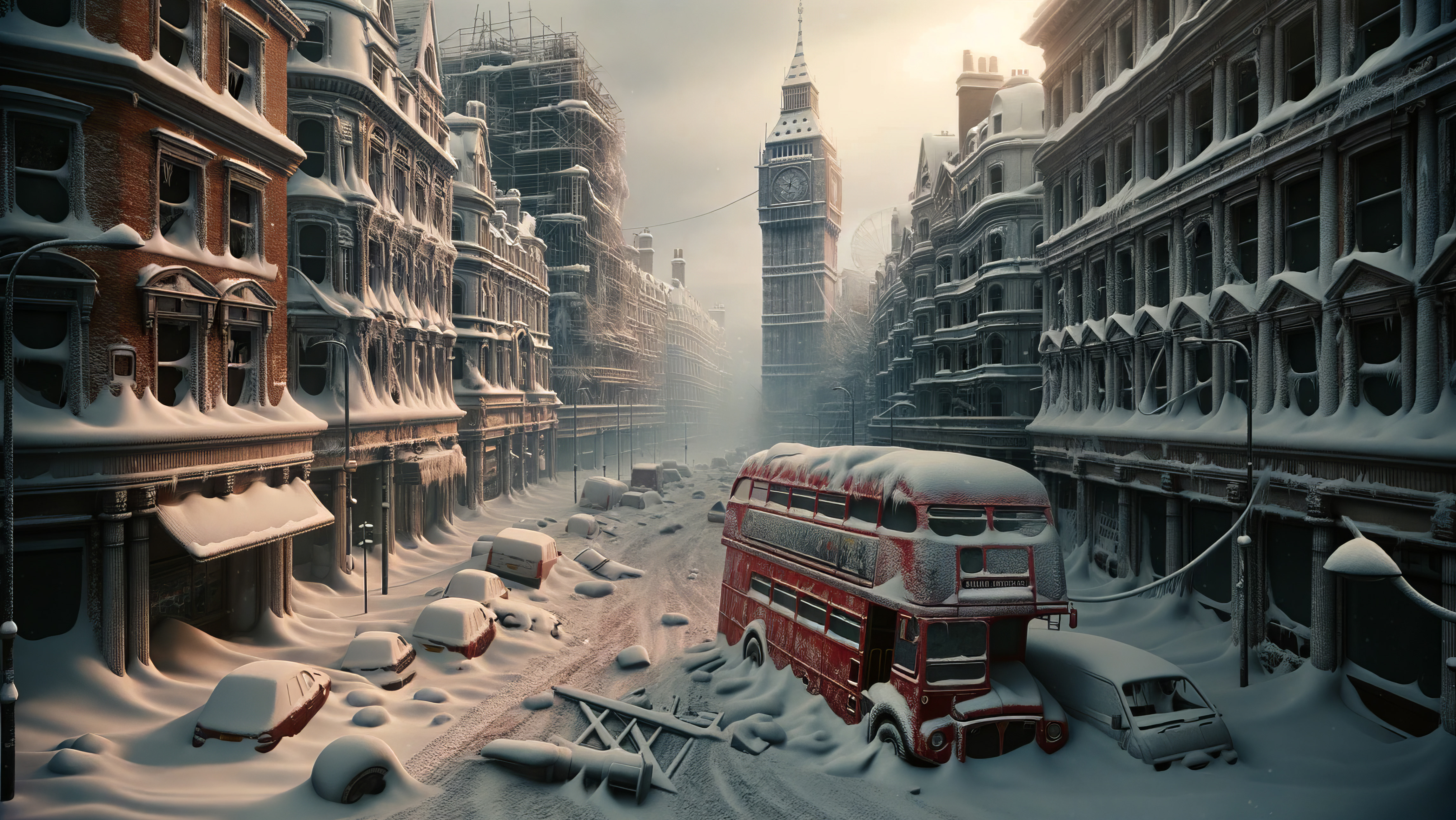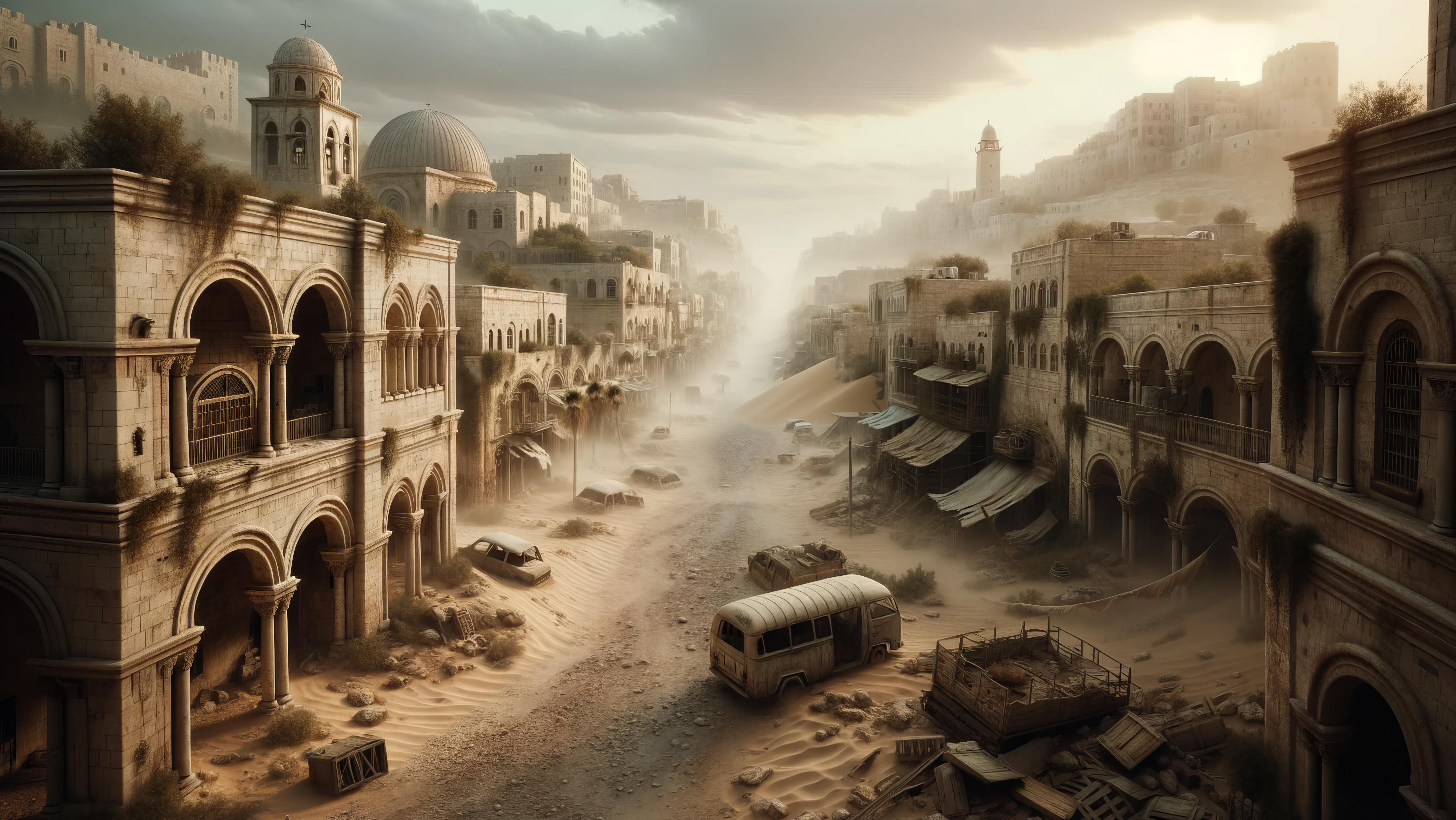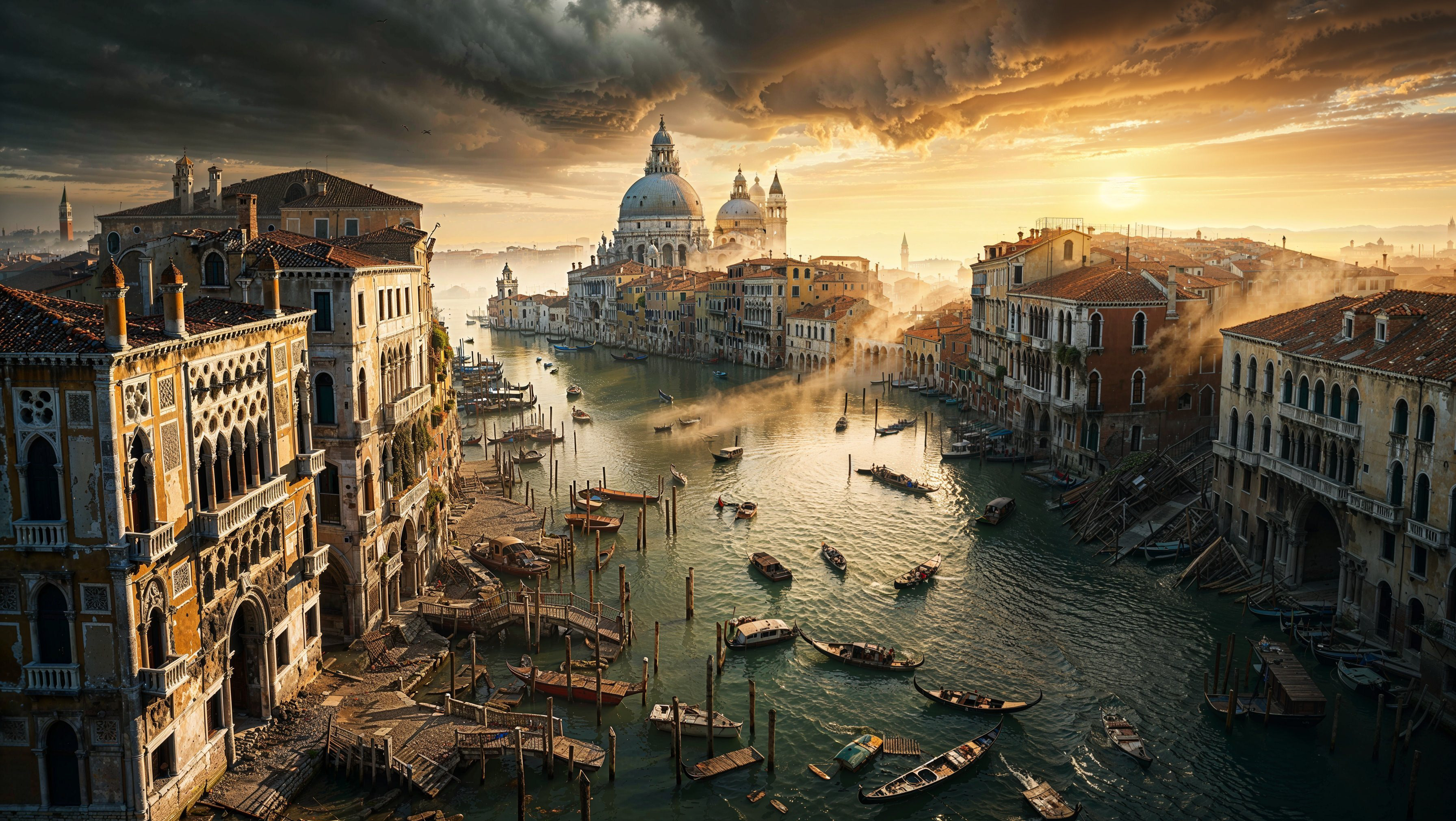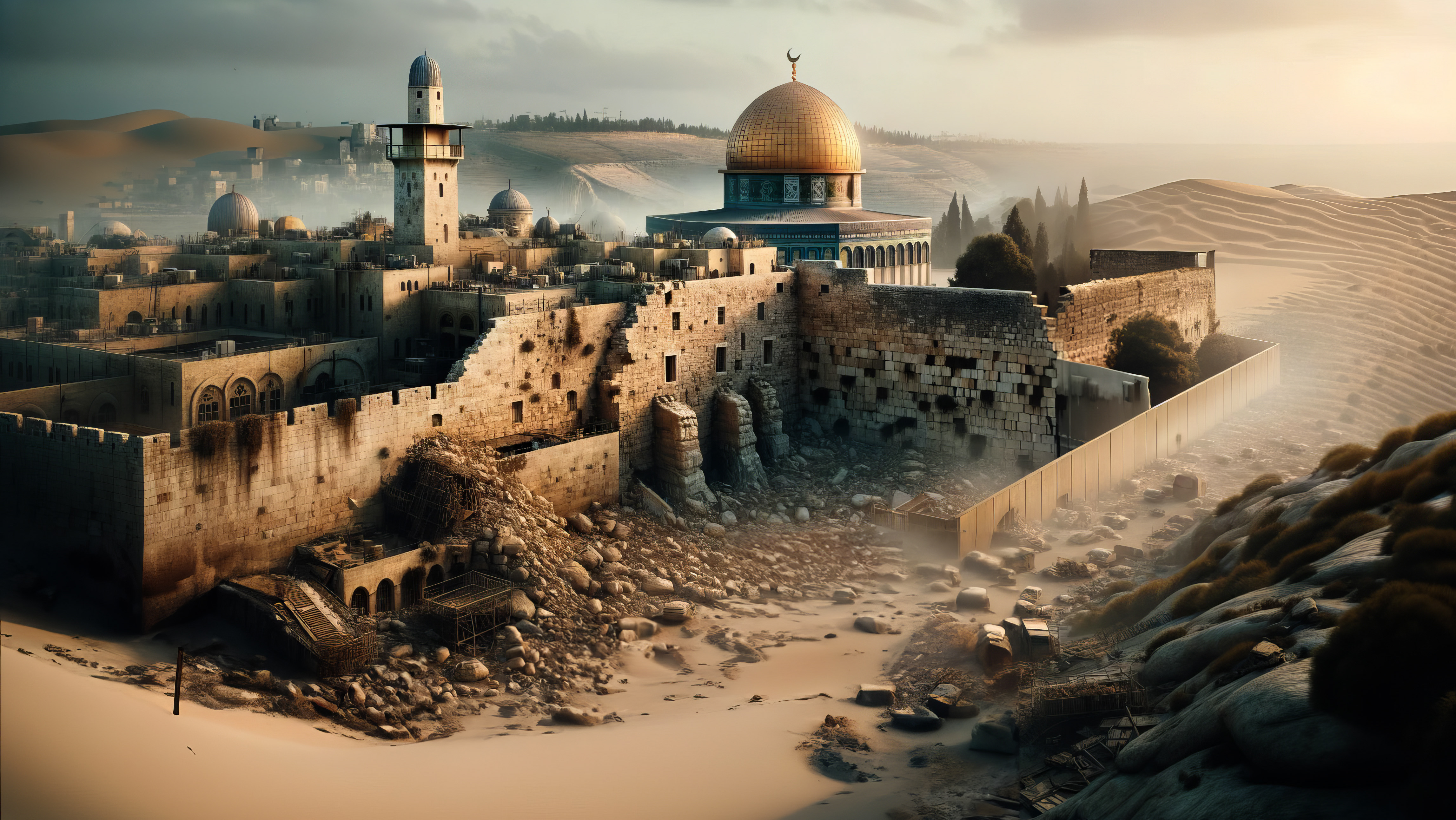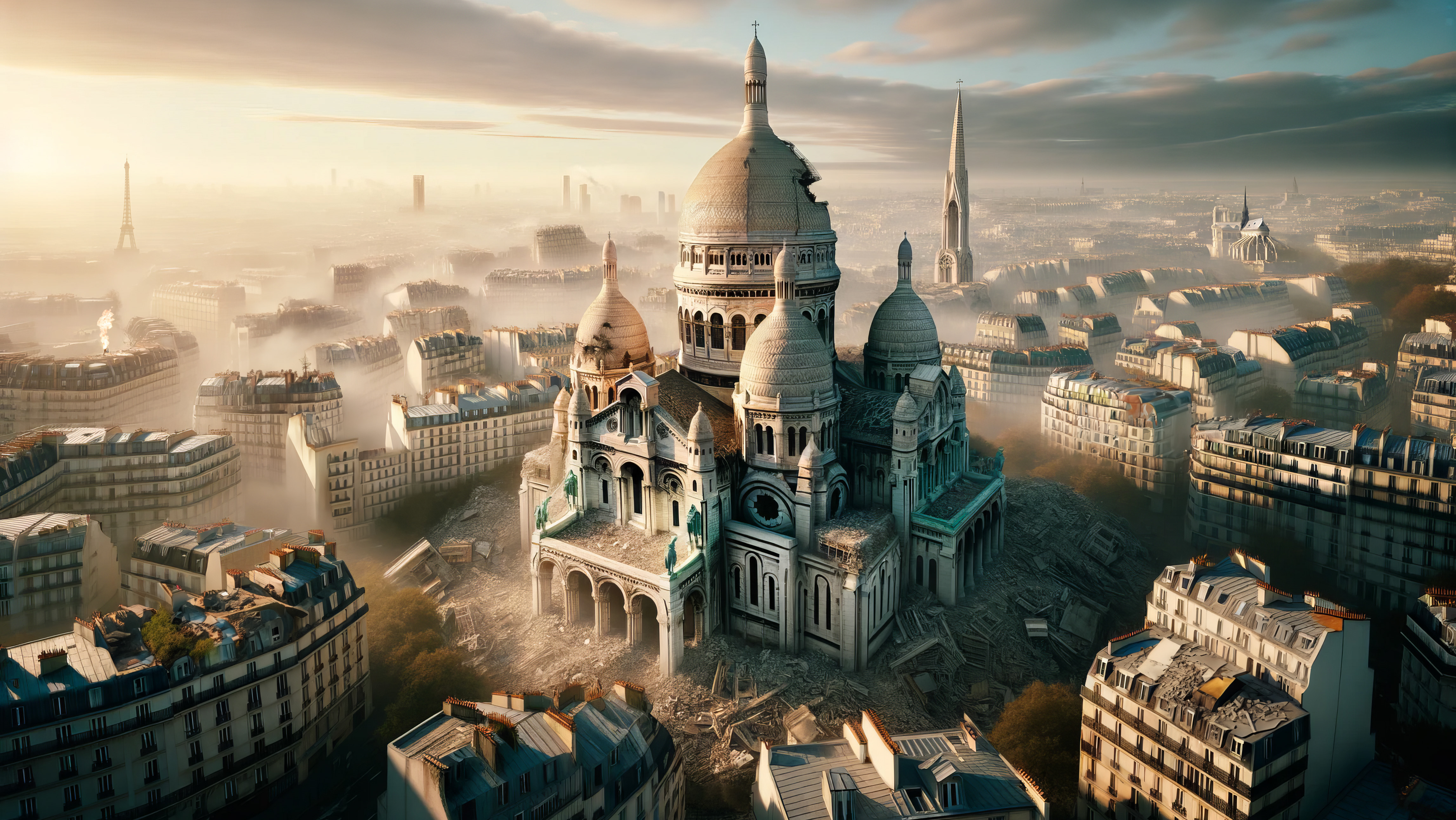The Lost Beauty of Kyoto
Kyoto, once the heart of Japan, pulsated with life, culture, and history. Its streets, lined with traditional wooden machiya houses, echoed with the whispers of geishas and the distant hum of temple bells. The city was a living testament to Japan's rich tapestry of history, where ancient traditions seamlessly blended with the modern world.
But now, as I stood at the edge of what was once the bustling city, all I could see was an endless expanse of water shimmering under the soft glow of the setting sun. The city that had once been the epicentre of culture and tradition was now submerged, lost to the world above. The news of Kyoto's submersion had sent shockwaves around the globe. How could a vibrant city full of life be reduced to an underwater relic?
I had read tales of the city's beauty, cherry blossoms that painted the skies pink in spring, and golden pavilions that reflected the sun's rays, creating a spectacle of light and shadow. But those were tales of a bygone era. Now, the city lay silent, its stories trapped beneath meters of water.
The decision to dive into this submerged world was not an easy one. The dangers were many - from the unpredictable currents to the remnants of a city that could be treacherous underwater. But the allure of exploring a world lost to time was too strong to resist. I wanted to see Kyoto, to feel its essence, and to relive its glory days, even if it was from beneath the water's surface.
A mix of emotions washed over me as I put on my diving gear. There was excitement, of course, but also a deep sense of melancholy. Diving into Kyoto was not just an exploration of a city; it was a journey into the past, a chance to connect with a world that was no more.
With a deep breath, I took the plunge. The cold water enveloped me, and as I descended deeper, the sounds of the world above faded away. All that remained was the rhythmic sound of my breathing and the gentle water sway.
The first sight that greeted me was the majestic Kiyomizu-Dera temple. Its wooden structure, which had once stood tall against the backdrop of the city, now lay submerged, its intricate carvings still intact. The temple, which had been a beacon of hope and faith for centuries, now stood silent, its sanctity undisturbed by the water around it.
Swimming further, I came across the Gion district. The wooden machiya houses, with their narrow facades and traditional architecture, looked almost surreal underwater. It was as if time had stopped, preserving the district in its prime. I could practically hear the soft tinkle of the shamisen, the traditional music that once filled the air.
But the sight of the Torii gates, standing tall and majestic even underwater, took my breath away. These gates, which marked the entrance to the sacred shrines, now looked like gateways to another world, their red pillars contrasting starkly against the blue of the water.
As I swam through the city, I was overwhelmed by mixed emotions. There was awe, of course, at the beauty that remained. But there was also a deep sense of loss, of a world that was no more. With its rich history and cultural heritage, Kyoto was now a city of memories, its stories waiting to be rediscovered.
As I returned to the surface, I couldn't help but wonder - what stories did this submerged city hold? What tales of love, faith, and hope lay trapped beneath the water's surface? It was a journey I was eager to embark on, to explore the lost beauty of Kyoto and to bring its stories back to life.
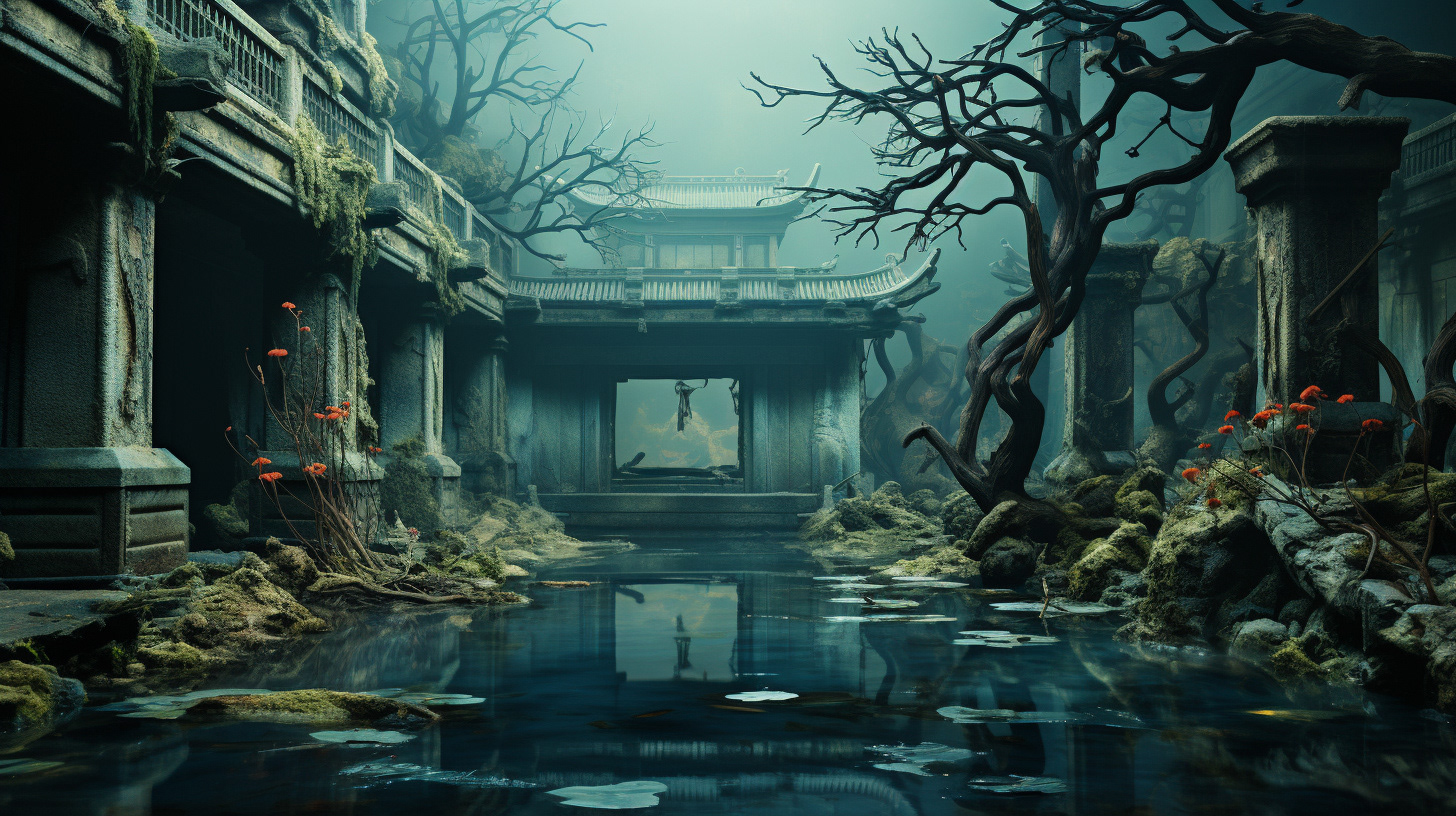
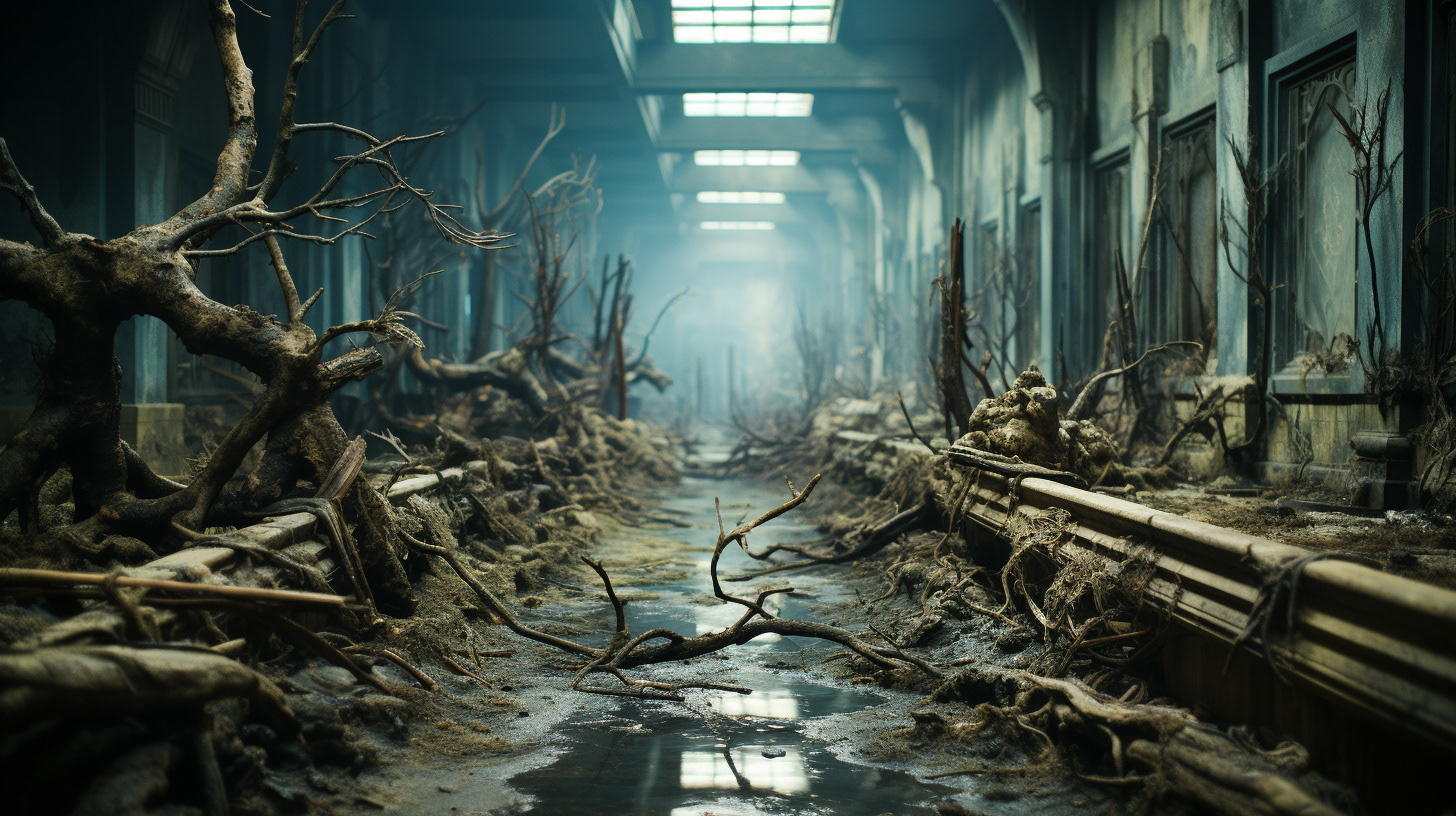
A Dive into the Past
The sun had barely begun its ascent when I found myself once again on the edge of submerged Kyoto, the weight of my diving gear starkly contrasting with the weightlessness I felt underwater. The previous dive had only scratched the surface of the city's mysteries, and I was eager to delve deeper into its watery depths.
With a final check of my equipment, I took a deep breath and descended into the azure abyss. The world above quickly faded, replaced by the haunting beauty of the submerged city. The water was more transparent today, the sun's rays piercing through, creating a kaleidoscope of colours that danced on the ancient structures below.
As I ventured deeper into the city, the remnants of Kyoto's illustrious past began to unfold before me. Streets that once echoed with the footsteps of monks and samurai now lay silent, their cobblestones covered in algae. Traditional tea houses, where whispered conversations were once exchanged over cups of matcha, now stood empty, their wooden interiors preserved by the water.
But it wasn't just the structures that captivated me; it was the stories they held. Each building and street had a tale to tell, and as I swam through the city, I felt as if I was travelling back in time, reliving Kyoto's golden days.
My journey took me to the city's heart, where the magnificent Kyoto Imperial Palace once stood. Its grandeur was still evident, even underwater. The palace's ornate gates, with their intricate carvings, beckoned me inside. As I swam through its vast courtyards and hallways, I could almost hear the echoes of royal decrees and the soft rustle of silk kimonos.
But it was in the palace's gardens that I felt the true essence of Kyoto. Even submerged, the gardens were a sight to behold. Stone lanterns, now covered in moss, lined the pathways, and koi fish swam gracefully among the water lilies. It was a serene oasis, a testament to the city's love for nature and beauty.
Yet, amidst the beauty, there were also reminders of the tragedy that had befallen Kyoto. Personal belongings, left behind in the rush to escape the rising waters, lay scattered across the city. A child's toy, a family heirloom, a handwritten letter - each object told a story of a life interrupted, of dreams and hopes cut short.
As I continued my exploration, I was constantly reminded of the delicate balance between nature and man. Kyoto, with its centuries-old traditions and deep reverence for nature, had been caught off guard by the very element it held sacred. The city's submersion was a stark reminder of the impermanence of life and the ever-changing world we live in.
But even in its submerged state, Kyoto's spirit remained unbroken. With its rich history and cultural heritage, the city refused to be forgotten. As I swam through its streets, I felt a deep connection, not just to the city but to the generations that had called it home.
With a heavy heart, I began my ascent to the surface, the city's stories etched in my mind as I broke through the water's surface; the world above seemed almost alien, a stark contrast to the submerged wonderland below. But one thing was clear - my journey into Kyoto's past had only begun.
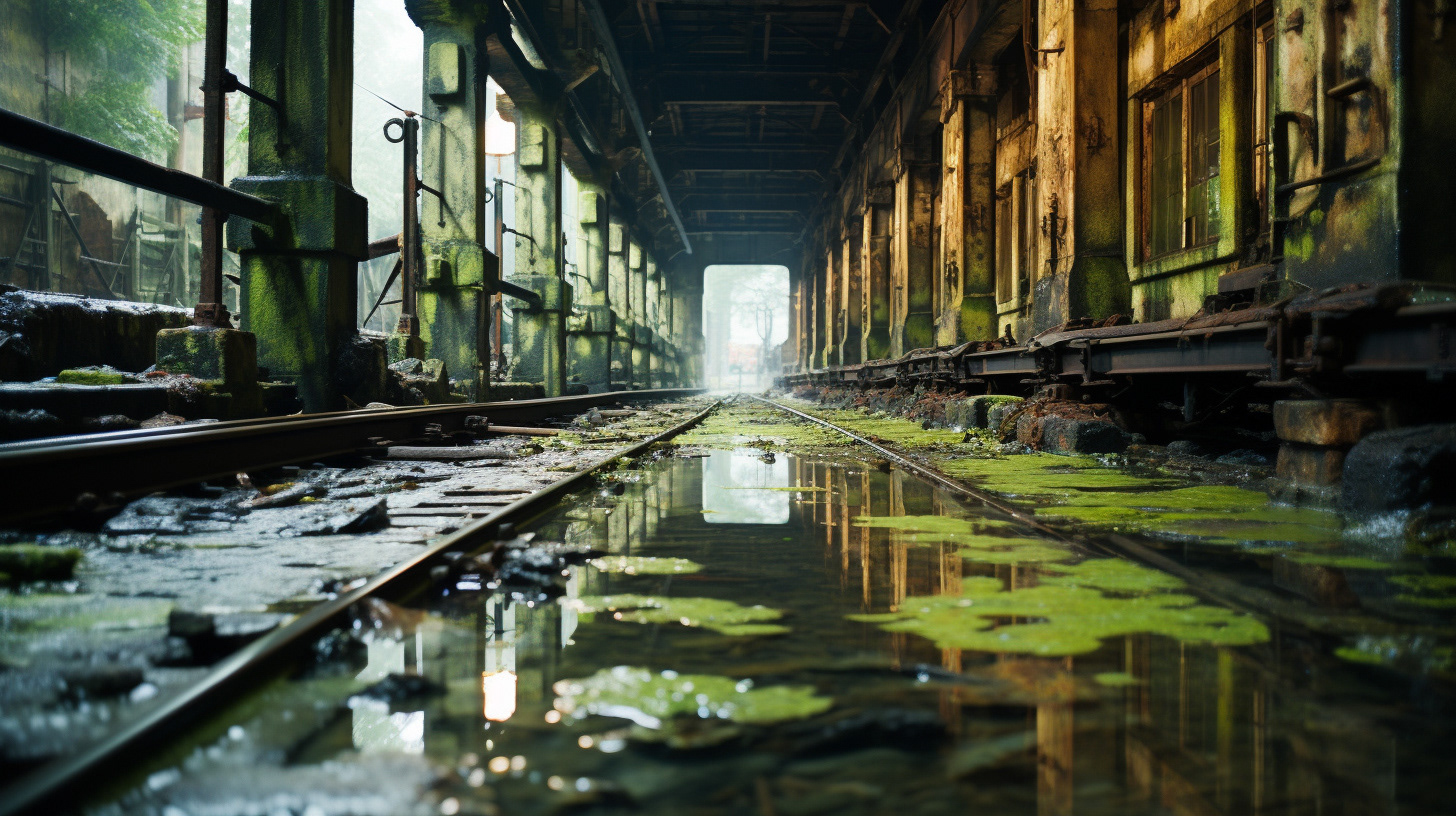
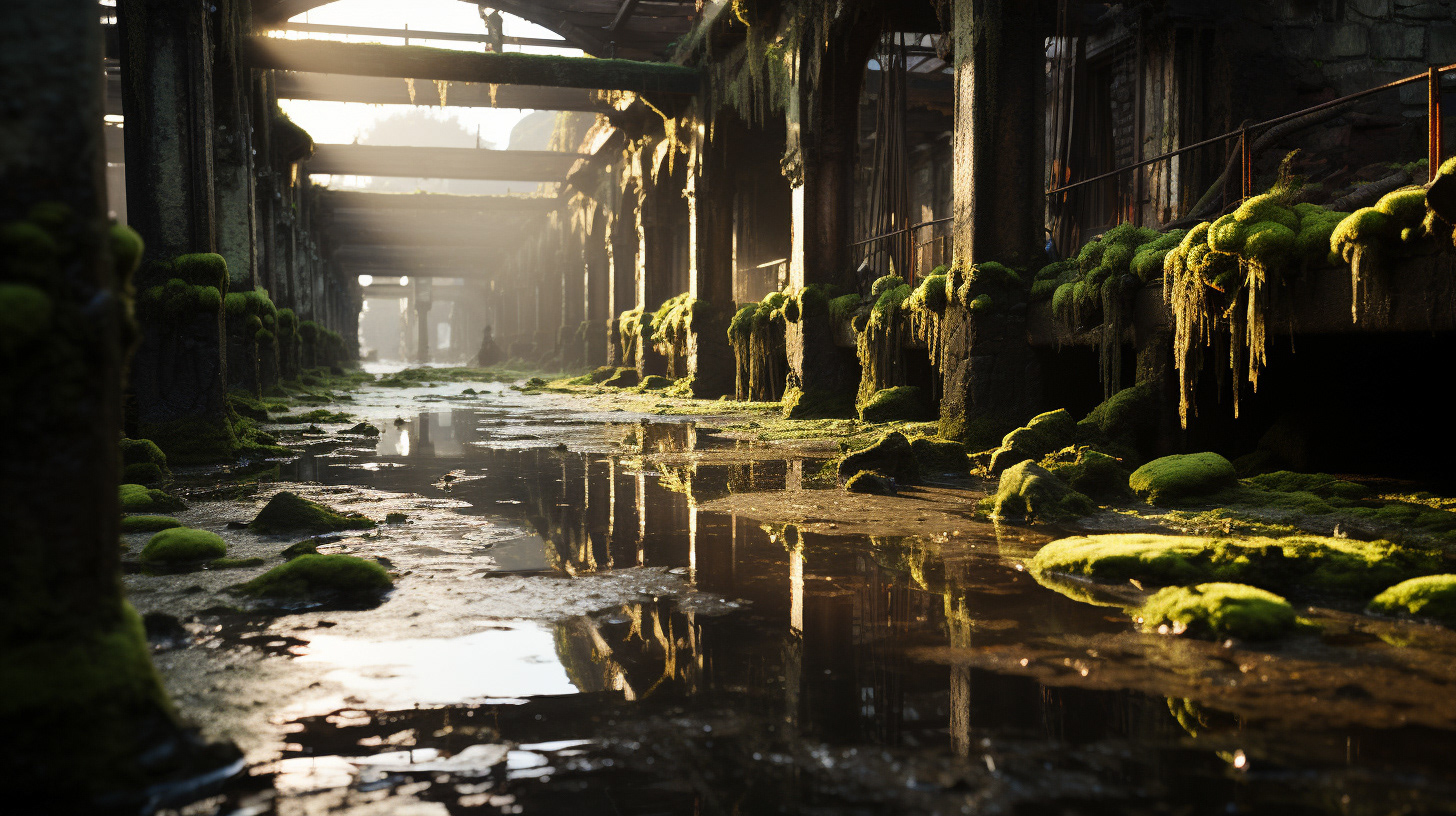
The Sunken Temples
The allure of Kyoto's submerged temples was irresistible. These sacred structures, which had once been the spiritual epicentres of the city, now lay hidden beneath the water's embrace. Their tales of devotion, faith, and timelessness beckoned me, and I found myself drawn to them, eager to uncover their secrets.
My first destination was the iconic Kinkaku-ji or the Golden Pavilion. As I approached its location, the glint of gold shimmered through the water, a testament to the temple's enduring beauty. With its gilded exteriors, the pavilion stood as a beacon amidst the watery expanse. Its reflection once admired on the serene pond surrounding it now danced on the water's surface above.
Swimming closer, the details of the pavilion became clearer. The intricate designs, the phoenix statue perched atop its roof, and the serene Buddha statues inside seemed to be in a state of meditative calm, undisturbed by their aquatic surroundings. The silence was profound, broken only by the soft bubbles escaping from my diving gear.
From Kinkaku-ji, I made my way to Ginkaku-ji, the Silver Pavilion. Unlike its golden counterpart, Ginkaku-ji's beauty lies in its simplicity. With its understated elegance, the temple seemed to merge with its surroundings, its wooden exteriors now home to marine flora. The sand garden, which once showcased meticulously raked patterns, now lay undisturbed beneath a silt, its artistry waiting to be rediscovered.
But the submerged Fushimi Inari Shrine left an indelible mark on my soul. The torii gates, which once marked the path to the sacred Mount Inari, now formed a mesmerising underwater corridor. With their black inscriptions, the vibrant red gates stood in stark contrast to the blue-green water, creating a surreal spectacle. As I swam through the gates, I felt a deep sense of reverence. Donated by a devotee seeking blessings, each gate was a testament to the people's unwavering faith.
Amidst the gates, I stumbled upon stone fox statues, guardians of the shrine, their expressions still vigilant, protecting the sacred mountain's deity. The lanterns, which once illuminated the path for pilgrims, now lay dormant, their light replaced by the soft glow of bioluminescent marine life.
As I explored the temples, I was constantly reminded of the transience of life. These structures, which had witnessed centuries of prayers, festivals, and ceremonies, now lay silent, their stories echoing in the water's depths. Yet, their spirit remained undiminished. The temples' timeless beauty and sacredness stood as a testament to Kyoto's enduring faith and resilience.
I began my ascent with awe and reverence, the temples' tales etched in my heart. The world above awaited, but the memories of the sunken temples would remain with me forever, a reminder of the city's undying spirit and the mysteries beneath.

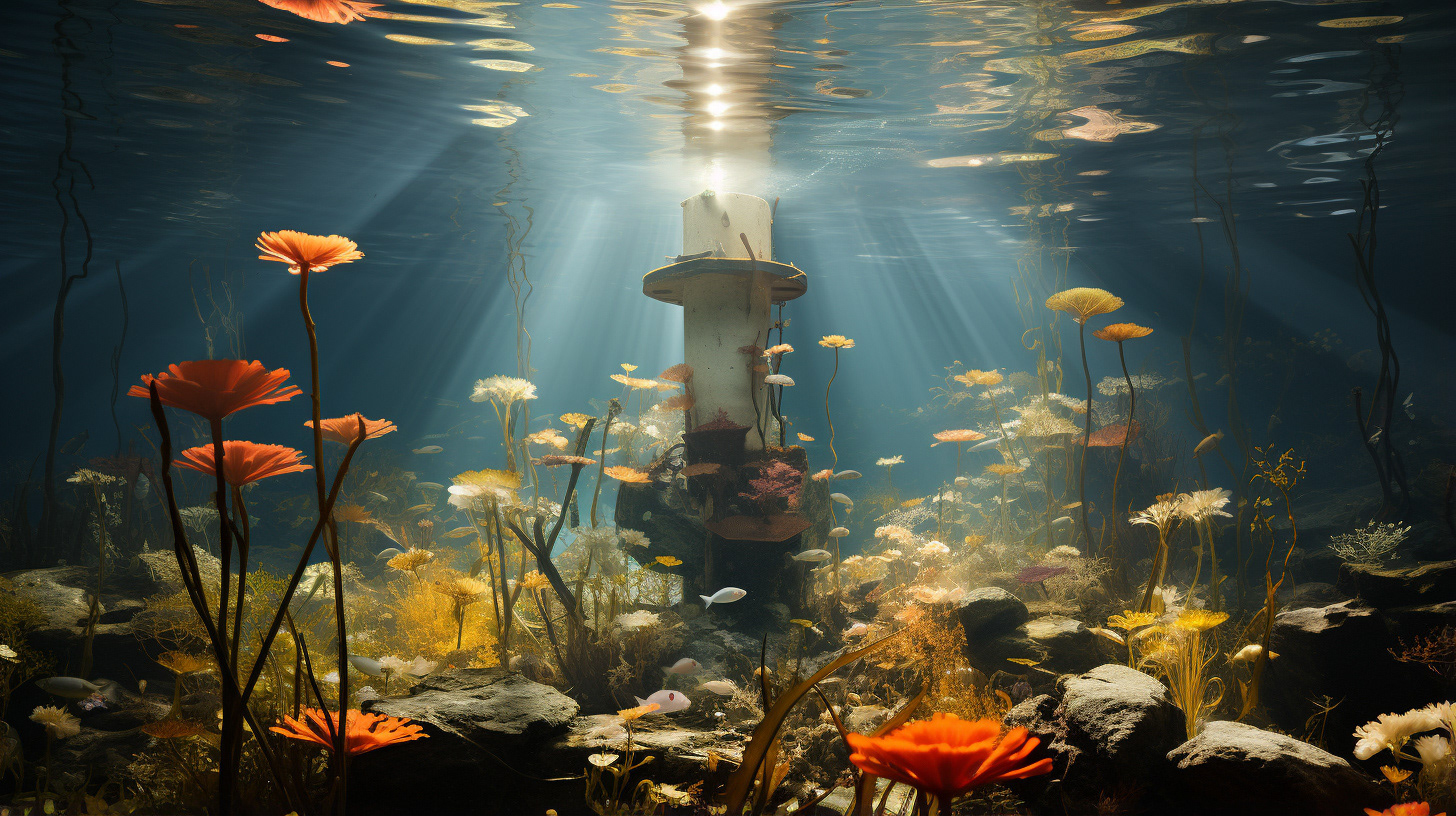
Echoes of Geishas
The Gion district, with its narrow alleys and traditional wooden machiya houses, had always been the heartbeat of Kyoto. Gion was known as the geisha district, where art, culture, and history converged. As I prepared to dive into this part of the submerged city, I was armed with my diving gear and historical texts and scientific equipment to uncover the district's secrets.
The geishas of Kyoto were not just entertainers; they were the custodians of Japan's traditional arts. Their history dates back to the 600s, evolving from the roles of saburuko (serving girls) to the highly skilled and trained artists they became. As I swam through the waterlogged streets, I could almost hear the soft strumming of the shamisen, the melodic tunes of traditional songs, and the rhythmic beats of the dance.
Using a specialised underwater scanner, I began mapping the district. The device, equipped with sonar technology, allowed me to visualise the structures and artefacts buried beneath layers of silt and algae. One particular scan revealed an ancient chaya, or teahouse, its interiors remarkably preserved. Inside, I found a collection of traditional instruments, their woodwork still intact, hinting at the musical soirees that once existed there.
In another part of Gion, I stumbled upon what appeared to be a geisha's dressing room. Delicate kimonos, their vibrant colours slightly faded but patterns still discernible, were carefully draped. Nearby, an array of hairpins and ornate combs hinted at the elaborate hairstyles the geishas were known for. I carefully extracted fabric samples from the kimonos using a sample collection kit. These would later be analysed to understand the materials and dyes used during that era, offering insights into the trade and craftsmanship of ancient Kyoto.
But it wasn't just the artefacts that told the story. Using a specialised underwater microphone, I captured the sounds of Gion. The recordings, when analysed, revealed subtle vibrations, remnants of the district's bustling activity. These sound waves, trapped underwater, offered a unique auditory glimpse into the past.
As I delved deeper into the science and history of Gion, I realised that the district was more than just a hub for entertainment. It was a living museum, a testament to Kyoto's rich cultural heritage. With their artistry and dedication, the geishas played a pivotal role in preserving Japan's traditional arts, ensuring they were passed down through generations.
With a renewed sense of admiration, I began my ascent. The world of Gion's echoes of geishas, music, and dance had left an indelible mark on my soul. As I broke through the water's surface, I was filled with a deep sense of gratitude, not just for the beauty and history of the district but for the science that allowed me to connect with it on a deeper level.
The Floating Torii Gates
The next leg of my journey was to the submerged Fushimi Inari Shrine, renowned for its thousands of Torii gates. But this dive was not just about exploration; it was about a challenge. Rumours had circulated of a hidden chamber beneath the shrine, which held ancient relics and secrets. With excitement and trepidation, I set out to uncover the truth.
The Torii gates, even underwater, were a sight to behold. Their vibrant red hue stood out against the muted colours of the submerged world, creating a mesmerising pathway. But as I swam through them, I noticed something peculiar. One of the gates had an unusual marking, a symbol not present on the others. My research had indicated that this symbol was a sign, a clue to the entrance of the hidden chamber.
Following the trail set by the symbol, I navigated through a labyrinth of gates, each turn bringing its own set of challenges. Schools of fish darted around, their swift movements creating whirlpools threatening to throw me off course. The underwater currents grew stronger, and I had to rely on my training and instincts to maintain my path.
After what felt like hours, I stumbled upon a secluded area hidden away from the main trail of gates. At its centre stood a colossal Torii, grander than the rest, with the same symbol etched onto its pillar. As I approached, I noticed a mechanism, an intricate lock that seemed to require a specific sequence to open.
Drawing from my knowledge of Kyoto's history and the shrine's significance, I began to decipher the code. Each turn of the mechanism corresponded to a historical event, a timeline of the city's rich past. After several attempts, there was a soft click, and the ground beneath me shifted.
The Torii gate slowly revealed an entrance leading to a dimly lit chamber. Inside, the walls were adorned with ancient scriptures and artefacts, each telling a story of Kyoto's spiritual journey. At the chamber's centre stood a pedestal holding a golden fox statue, the deity of the Fushimi Inari Shrine.
But my discovery was short-lived. Having been sealed for centuries, the chamber began to react to the external water pressure. Cracks started to appear, and water began to seep in rapidly. With the entrance slowly closing, I had to think fast. I grabbed the fox statue and a few other artefacts and swiftly escaped, avoiding the collapsing chamber.
As I emerged from the depths, the adrenaline still coursing through my veins, I realised this adventure was more than a dive into the past. It was a race against time, a test of wit and courage. The submerged city of Kyoto, with its hidden secrets and challenges, had once again proven that beneath its calm exterior lay a world of adventure waiting to be discovered.

Memories of Cherry Blossoms
The exhilaration from the discovery at Fushimi Inari is still fresh, and I set my sights on another iconic aspect of Kyoto: the cherry blossoms, or sakura. These delicate flowers, symbolic of the transient nature of life, had once transformed Kyoto into a dreamy canvas of pink and white every spring. Now, submerged and lost to time, I wondered if any trace of these blossoms remained.
Guided by old maps and historical records, I headed towards Maruyama Park, once a popular spot for hanami, the traditional cherry blossom viewing festival. The water grew colder as I descended, and a soft pink hue began to tint the surroundings. To my astonishment, entire cherry trees, though devoid of blossoms, stood preserved underwater. Once heavy with flowers, their twisted branches now reached out like skeletal hands, swaying with the currents.
But nature, in its resilience, had a surprise in store. Among the barren trees, I spotted a few that bore blossoms, not the traditional sakura, but a unique aquatic variant. These underwater sakura glowed with bioluminescent light resulting from a rare genetic mutation, casting an ethereal glow around.
Curious about this phenomenon, I collected samples for analysis. Initial tests using my portable underwater lab kit indicated that these blossoms had adapted to their submerged environment, converting the water's minerals into energy through a process previously unknown in botany.
As I navigated the park, memories of past hanami festivals played out. Families picnicking under the cherry trees, laughter and music filling the air, and the soft glow of paper lanterns as night fell. Using a specialised holographic projector, I recreated these scenes, overlaying them onto the current landscape. The juxtaposition of past and present was both haunting and beautiful.
Yet, amidst the beauty, a challenge awaited. A sudden shift in the tides created whirlpools, threatening to trap me within the park's confines. Relying on my training, I navigated the treacherous waters, using the cherry trees as anchors. The once serene garden had turned into a maze of challenges, testing my limits.
Emerging from the ordeal, I took a moment to reflect. With their fleeting beauty, the cherry blossoms were a reminder of life's impermanence. But their underwater counterparts, glowing with resilience, symbolised hope and adaptation in adversity.
As I ascended, the glowing sakura fading from view, I was filled with mixed emotions. The adventure had been a roller-coaster, blending the serenity of nature with the thrill of challenges. But above all, it was a journey into the heart of Kyoto, a city that continued to enchant and inspire even in its submerged state.

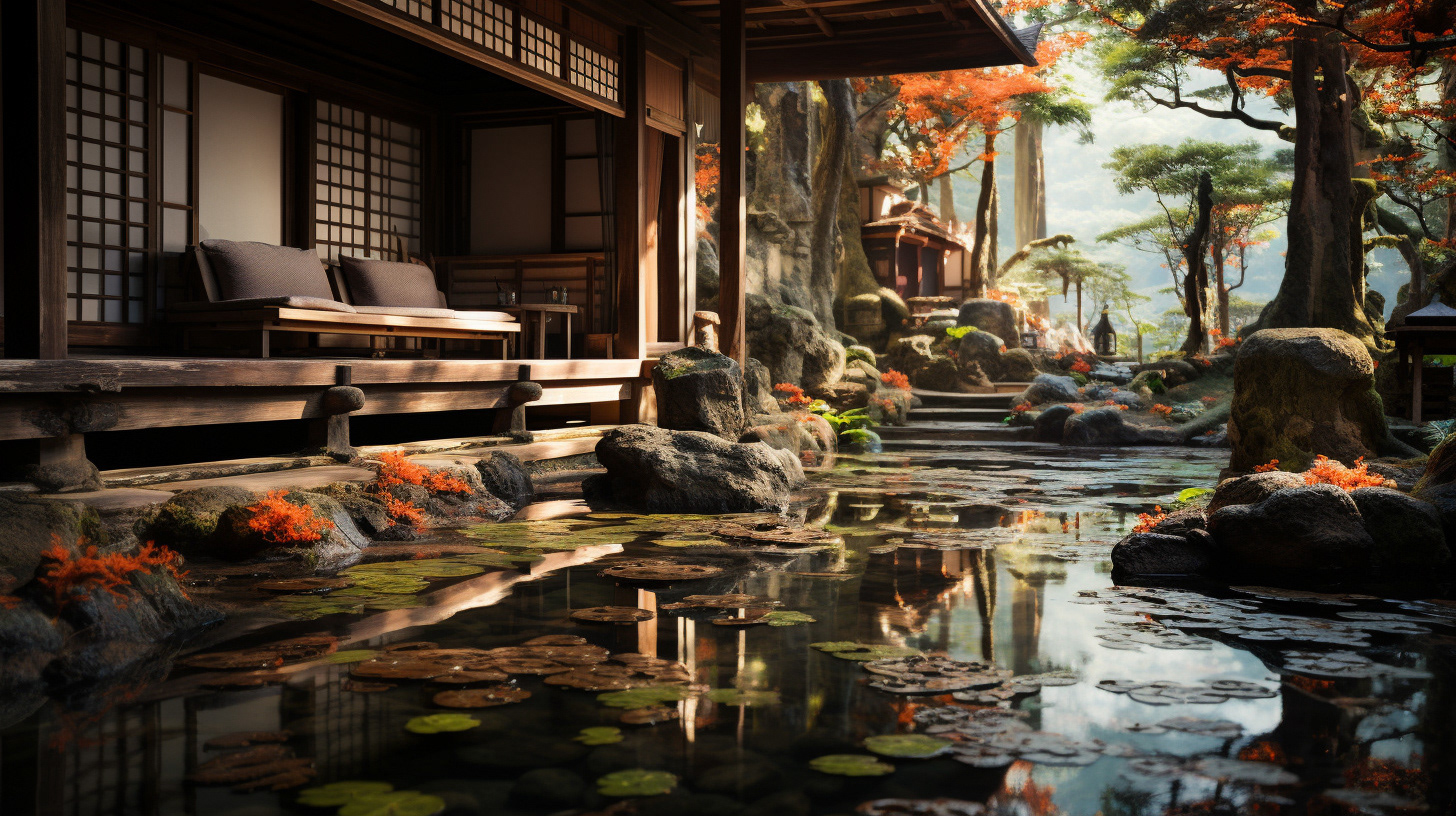
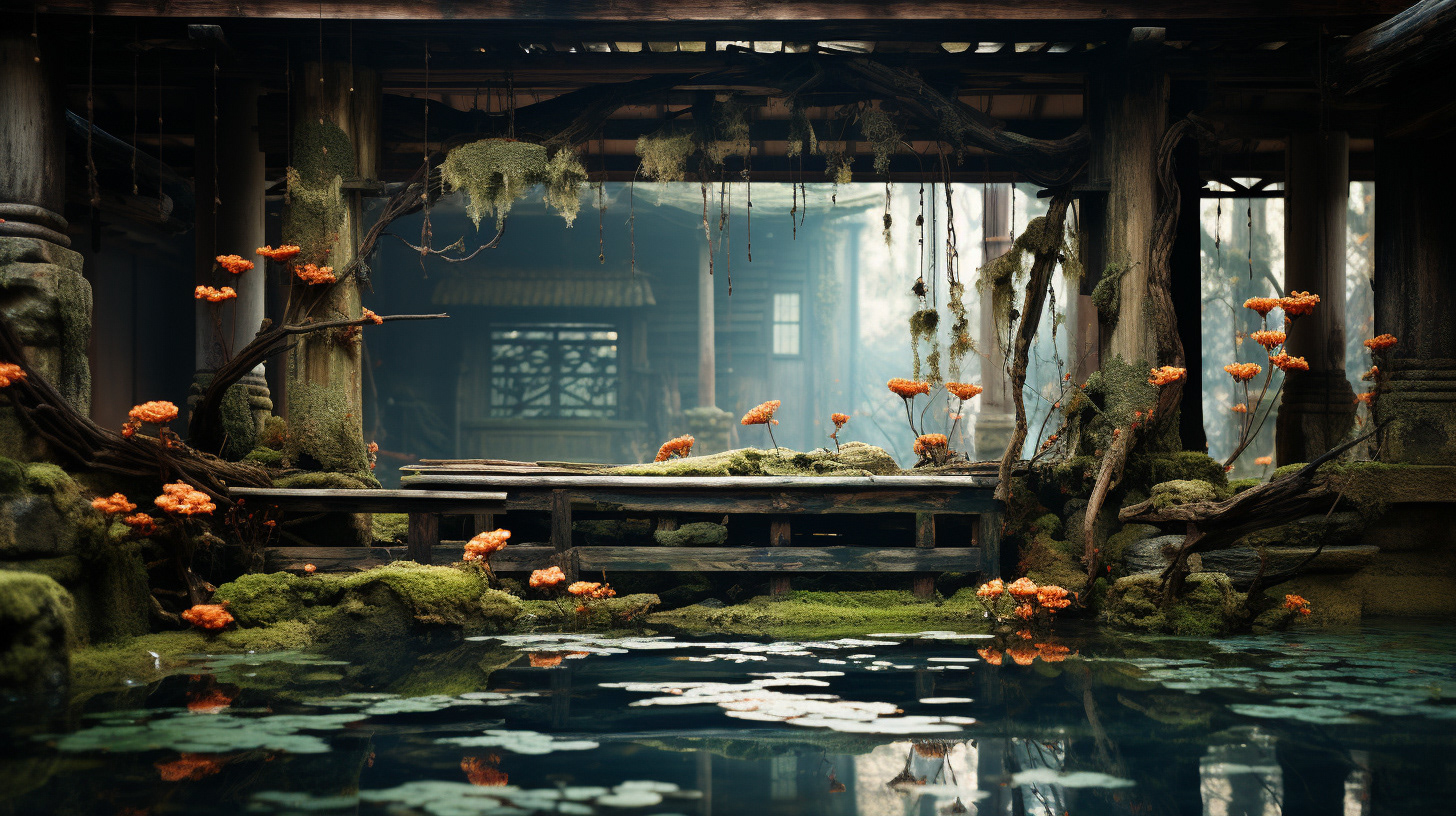
The Kyoto Imperial Palace
The Kyoto Imperial Palace, once the residence of Japan's Imperial family, symbolised power, elegance, and architectural brilliance. Its vast grounds, intricate structures, and lush gardens had been the backdrop for numerous historical events. Submerged and silent, it beckoned me with tales of royalty, ceremonies, and ancient traditions.
As dawn broke, casting a golden hue over the water's surface, I began my descent towards the palace grounds. Though worn by time and water, the grand entrance gates stood tall, their majestic aura undiminished. Swimming through, I was greeted by the vast palace courtyard, its stone pathways now home to coral formations and marine life.
With its iconic. sure and sweeping roofs, the main wooden architecture loomed ahead. Its once-bustling chambers, where emperors held court and important decisions were made, now lay silent. But the grandeur remained. The ornate carvings, the tatami-matted rooms, and the intricate wall paintings depicting scenes from ancient folklore were remarkably preserved.
However, my exploration took a turn when I stumbled upon a sealed chamber hidden from the main halls. My instincts told me that this was no ordinary room. With careful precision, I managed to unlock the chamber, revealing a treasure trove of artefacts. Ancient scrolls, ceremonial attire, and imperial seals are pieces of Kyoto's regal history.
But the true gem was an intricately designed map detailing a secret passage within the palace grounds. Legends spoke of a hidden garden, a sanctuary where emperors sought solace and meditated. With the map as my guide, I embarked on a quest to find this elusive haven.
The journey was not without challenges. Hidden traps that protect the sanctuary from intruders lay in wait. Narrow passageways, sudden drops, and puzzle-like mechanisms tested my wit and agility. But with determination and the map's guidance, I finally emerged into the hidden garden.
It was a sight to behold. Even underwater, the garden was a masterpiece. Stone lanterns illuminated by bioluminescent algae, koi fish swimming gracefully in what was once a serene pond, and at its centre, a magnificent cherry tree, its blossoms still radiant and untouched by time.
As I sat amidst the garden's beauty, I felt a deep connection to the emperors of the past. This sanctuary, untouched by the calamity above, was a testament to Kyoto's enduring spirit and legacy.
However, time was of the essence. The stability of the chamber was uncertain, and I had to ensure the artefacts, especially the invaluable map, were preserved for future generations. Carefully documenting and securing my findings, I began my ascent, the memories of the imperial palace and its hidden sanctuary etched in my heart.
Lessons from the Kamo River
The Kamo River, or Kamogawa, had always been more than just a waterway for Kyoto. It was the city's lifeblood, a silent witness to its evolving history, and a place of reflection and connection. With most of its expanse submerged, I was determined to uncover the river's historical and scientific secrets.
Historical records spoke of the river's significance in Kyoto's development. Ancient rituals, festivals like the Aoi Matsuri, and even political intrigues had all played out on its banks. The river had seen emperors rise and fall, and poets pen verses inspired by its serene flow.
Equipped with a submersible drone designed to map and analyse underwater terrains, I began my exploration. With its advanced sensors, the drone could detect variations in the riverbed, hinting at possible artefacts or structures of interest.
As I navigated the submerged sections of the Kamogawa, the drone sent back intriguing data. There were anomalies in the riverbed, patterns that hinted at ancient structures, possibly shrines or ceremonial platforms. Using a combination of sonar imaging and sediment analysis, I pinpointed a location that held promise.
Descending to the riverbed, I discovered remnants of an ancient shrine dedicated to the river gods. Stone inscriptions detailed rituals to appease these deities, ensuring the city's prosperity. Nearby, I found ceremonial vessels, their designs indicating a blend of Shinto and Buddhist influences, reflecting Kyoto's syncretic religious practices.
But the river held more than just historical secrets. As I collected water samples, I noticed peculiar microorganisms previously unknown in freshwater habitats. These organisms, when analysed, showed a unique ability to metabolise minerals from the submerged city structures, converting them into energy. This discovery hinted at a possible evolutionary adaptation, a testament to nature's resilience and ingenuity.
While engrossed in my studies, the river's currents shifted unpredictably. Historical texts had mentioned the Kamogawa's ever-changing moods, and now I was experiencing it firsthand. The calm waters turned turbulent, creating whirlpools and strong undercurrents.
Relying on the drone's data, I identified pockets of calmer waters and navigated through them, turning the river's challenges into an intricate dance of science and intuition.
Emerging from the depths, I reflected on the lessons the Kamogawa had imparted. It was a confluence of history and science, a reminder of Kyoto's rich past and the ever-evolving mysteries of nature. With its flowing waters, the river had taught me the essence of time – ever-changing, unpredictable, but always moving forward.
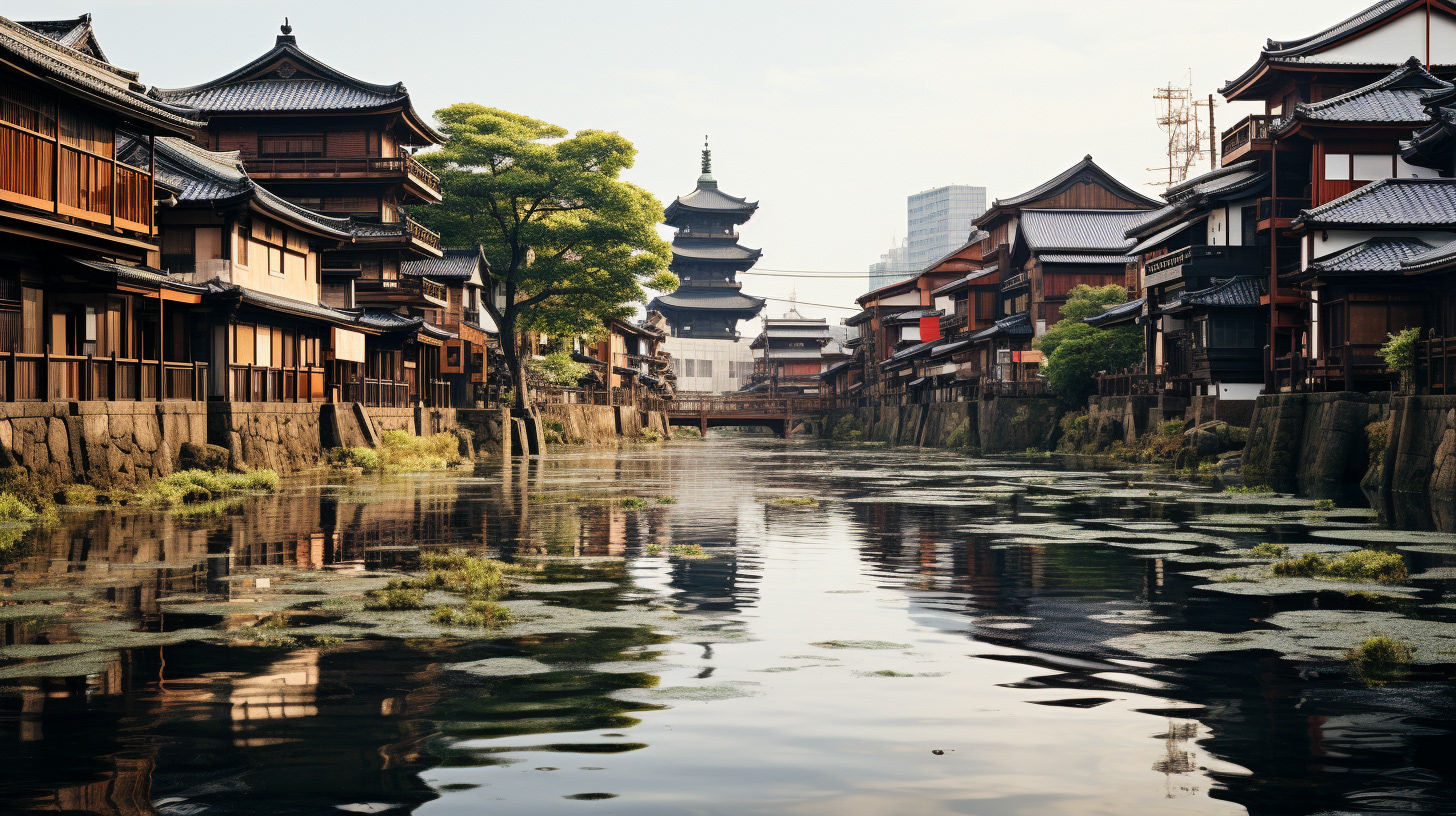


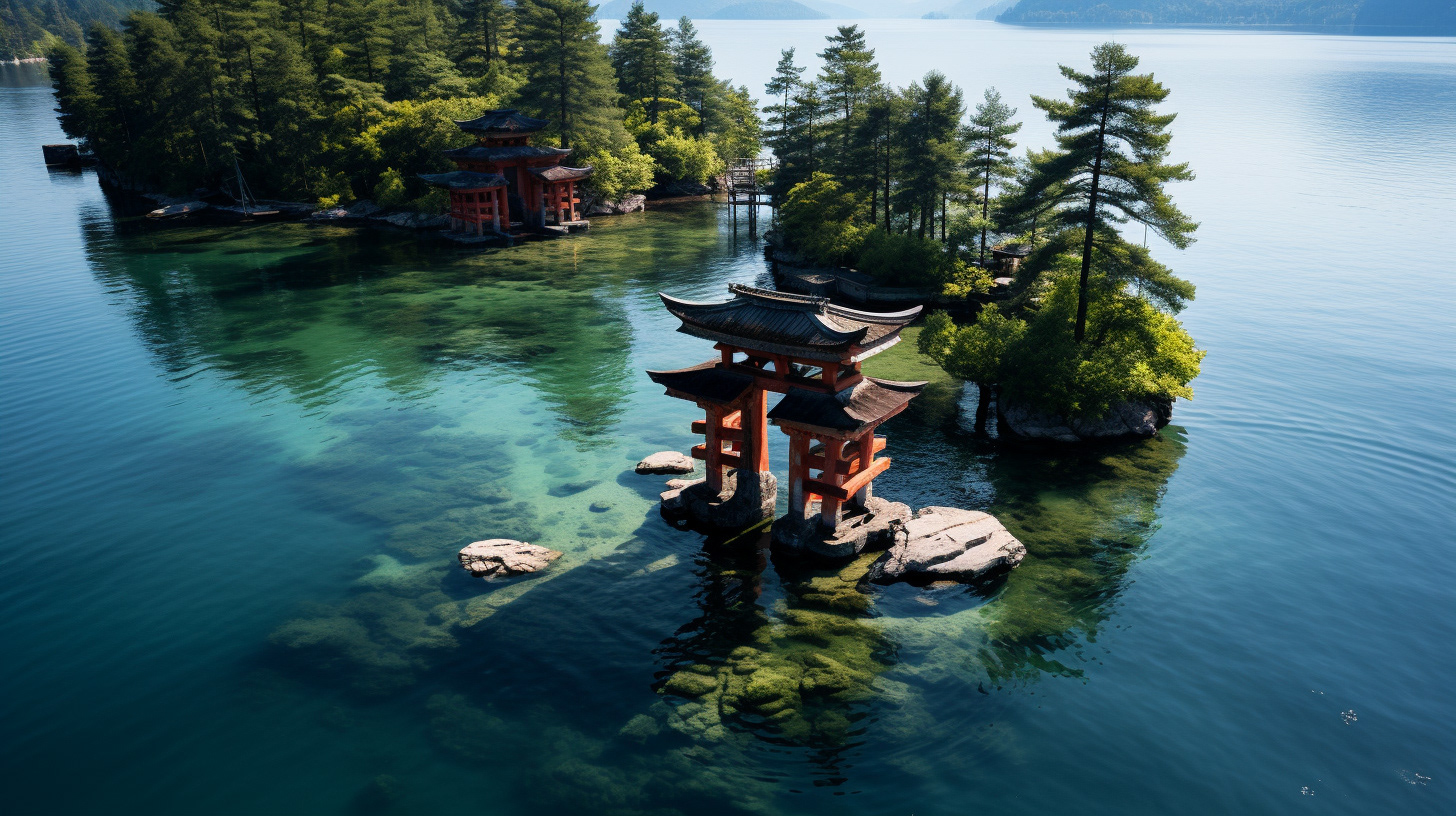
Whispers of the Underwater Realm
The submerged city of Kyoto, with its historical relics and architectural wonders, was not the only world waiting to be explored. Beneath the city's depths lay another realm, teeming with marine life, a vibrant ecosystem that had adapted and thrived in this new underwater environment.
Guided by the soft glow of my underwater torch, I ventured towards the outskirts of the submerged city, where the urban landscape gave way to natural formations. Coral reefs, their colours more vivid than any artist's palette, stretched out before me. These reefs, a testament to nature's adaptability, had become the foundation for Kyoto's new underwater inhabitants.
Schools of vibrant koi, once the prized possessions of Kyoto's gardens, now swam freely among the corals. Their graceful movements, synchronised and harmonious, were a dance of freedom and adaptation. Among them, I spotted other species – neon tetras, angelfish, and even the elusive Japanese dragon eel, known for its ornate patterns and reclusive nature.
But the discovery of a unique bioluminescent jellyfish truly captivated me. Floating gracefully, its tentacles emitted a soft blue glow, illuminating the waters. Scientific records did not mention such a species in freshwater habitats, indicating a possible discovery. I carefully collected a specimen for further study using a specialised containment unit.
As I delved deeper, I stumbled upon underwater caves, their entrances guarded by ancient stone statues and remnants of Kyoto's temples. Venturing inside, I discovered a world untouched by time. Stalactites and stalagmites, formed over millennia, created intricate patterns on the cave walls. And within these caves, unique species of blind cavefish and shrimp had made their home, having evolved in this light-deprived environment.
Yet, the underwater realm was not without its challenges. Predatory species, attracted by the lights of my equipment, began to circle. A particularly curious barracuda, its sharp teeth glinting, decided to investigate. Using a combination of evasive manoeuvres and a sonic repellent device, I managed to deter the creature, turning a potential threat into a thrilling encounter.
As I began my ascent, the underwater world of Kyoto left me in awe. It was a realm where history and nature converged, where the city's legacy intertwined with the mysteries of the deep. The fish, the corals, and the caves whispered tales of resilience, adaptation, and the enduring beauty of life.
Rebirth and Reflection
As the sun cast its first golden rays, painting the horizon in hues of amber and rose, I found myself at the edge of submerged Kyoto one last time. This journey, a blend of history, science, and adventure, had been transformative, revealing layers of the city and its underwater realm that few had witnessed.
With a heart full of memories, I decided to visit the submerged Kiyomizu-dera temple once more. The temple, with its wooden balconies and panoramic views, had once been a place of reflection and solace for many. Now, beneath the waters, it held a different kind of serenity.
Floating amidst the temple's pillars, I took a moment to meditate, letting the weightlessness of the water envelop me. The soft hum of the underwater world, the distant calls of marine creatures, and the gentle sway of aquatic plants created a symphony of peace.
As I closed my eyes, visions of the past and present converged. The bustling streets of ancient Kyoto, the laughter of children playing by the Kamo River, the soft melodies of geishas from the Gion district, and the vibrant underwater world that now thrived—all played out in a harmonious dance.
But amidst these reflections, a realisation dawned. Kyoto, with its rich history and cultural legacy, was not lost. It had merely transformed, adapting to the whims of time and nature. The city's spirit, its essence, remained undiminished, preserved in its stories, its relics, and its people.
Emerging from my meditation, I felt a deep sense of gratitude. This journey had been more than just an exploration; it was a lesson in resilience, adaptation, and the enduring beauty of life.
As I began my final ascent, the city of Kyoto, both its past and present, left an indelible mark on my soul. And as the waters receded behind me, I carried with me tales of a city reborn, a testament to the timeless dance of man, nature, and history.
